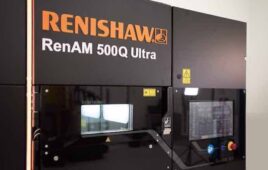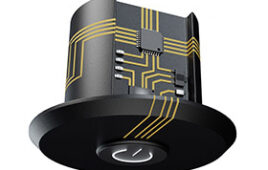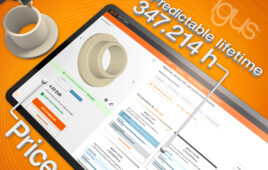Want to really impress your friend with a birthday gift? How about flying a drone to her front door that is MADE OF CHOCOLATE!
It can be done, and it has been done, by a team of three Duke undergrads, with help from a chocolate maker called Chocolove.
About a year ago, mechanical engineering student Anuj Thakkar and a friend got to talking over coffee. “Wouldn’t it be cool if we had edible drones?” they wondered for no particular reason. “I don’t know, it was a nice day or something. I’m not sure how we got there,” Thakkar said.
Over the summer, that goofy idea began to take shape—a somewhat amorphous shape at first.
“The Jell-O drone was the first one,” Thakkar said. “We tried cheese. We tried bread. Chocolate was what we settled on.”
Chocolate is moldable, for one thing, making the design process a little easier. Thakkar, mechanical engineering student Carlo Lindner and chemistry and neuroscience major Ben Succop started tinkering in earnest. Eventually, and just in time to bring a smile to their friend Kristine Stanner’s face, they managed to build the body of a fleet of drones out of chocolate.
On Sept. 7, Kristine’s birthday, they flew the drone over to her at the Duke Smart Home with a Chocolove video crew looking on, and the rest is Facebook history. She promptly busted a piece off the one-of-a-kind prototype and ate it.
“Anuj is one of our student workers in the lab,” said Chip Bobbert, service manager at the Innovation Co-Lab on West Campus, which has 3D printers and other rapid prototyping equipment for students. “He’s an engineering student and always pushes the envelope in terms of interesting ideas. “
“I like to make quirky gifts for my friends,” Thakkar said.
The students made molds with 3D printing to shape the chocolate fuselage. The four motors and propellers are off-the-shelf parts, not chocolate, and they were held together by a frame that runs through the center of the fuselage.
Summertime in North Carolina is not a great time to be working with chocolate. “The first drone—chocolate was falling from the sky,” Thakkar said. “It was sort of dripping in flight.”
Their early prototyping was accomplished with cheap, grocery store chocolate, which unmolded well and gave them reasonable enough results that they were able to make a demonstration video on a smart phone and pitch the idea to Chocolove, a Boulder, Colorado maker of all-natural and organic chocolates which sells products on the Duke campus.
Chocolove enthusiastically said yes, and provided high-quality dark chocolate in quantity to the team.
More testing ensued, with the team spending long, chocolate-coated days at Duke makerspaces the Co-Lab and The Foundry. The higher-quality chocolate is more brittle than the cheap stuff, so the team had to tinker a bit, first with plastic embedded in the fuselage, and then with strands of sweet vermicelli that they embedded to give the airframe a little more resilience and flex.
They crashed. A lot. The frame always held, but the fuselage had a tendency to fracture or tear, which may be why real airplanes aren’t made of chocolate. The final design ended up being about 200 grams of chocolate.
Thakkar said the students don’t have any ambitions to make their idea into a company or anything. In fact, truth be told, he’s kind of off chocolate altogether.
“I got tired of chocolate in the first day of prototyping,” Thakkar said. It seems there was “a bucket” of product left over on that first day and the college men felt it couldn’t go to waste.
“No more chocolate!” Thakkar said.
Filed Under: 3D printing • additive • stereolithography, Rapid prototyping




